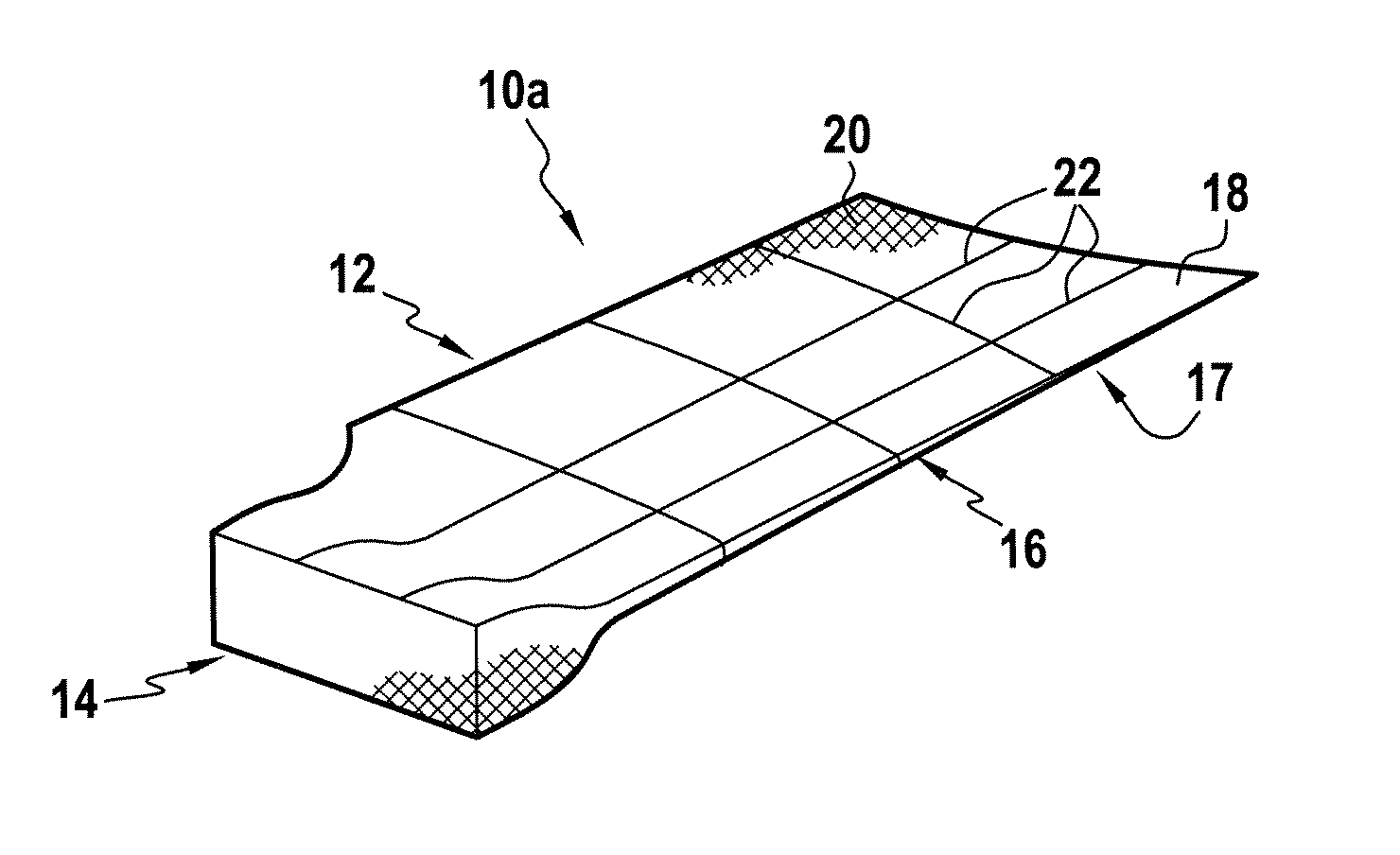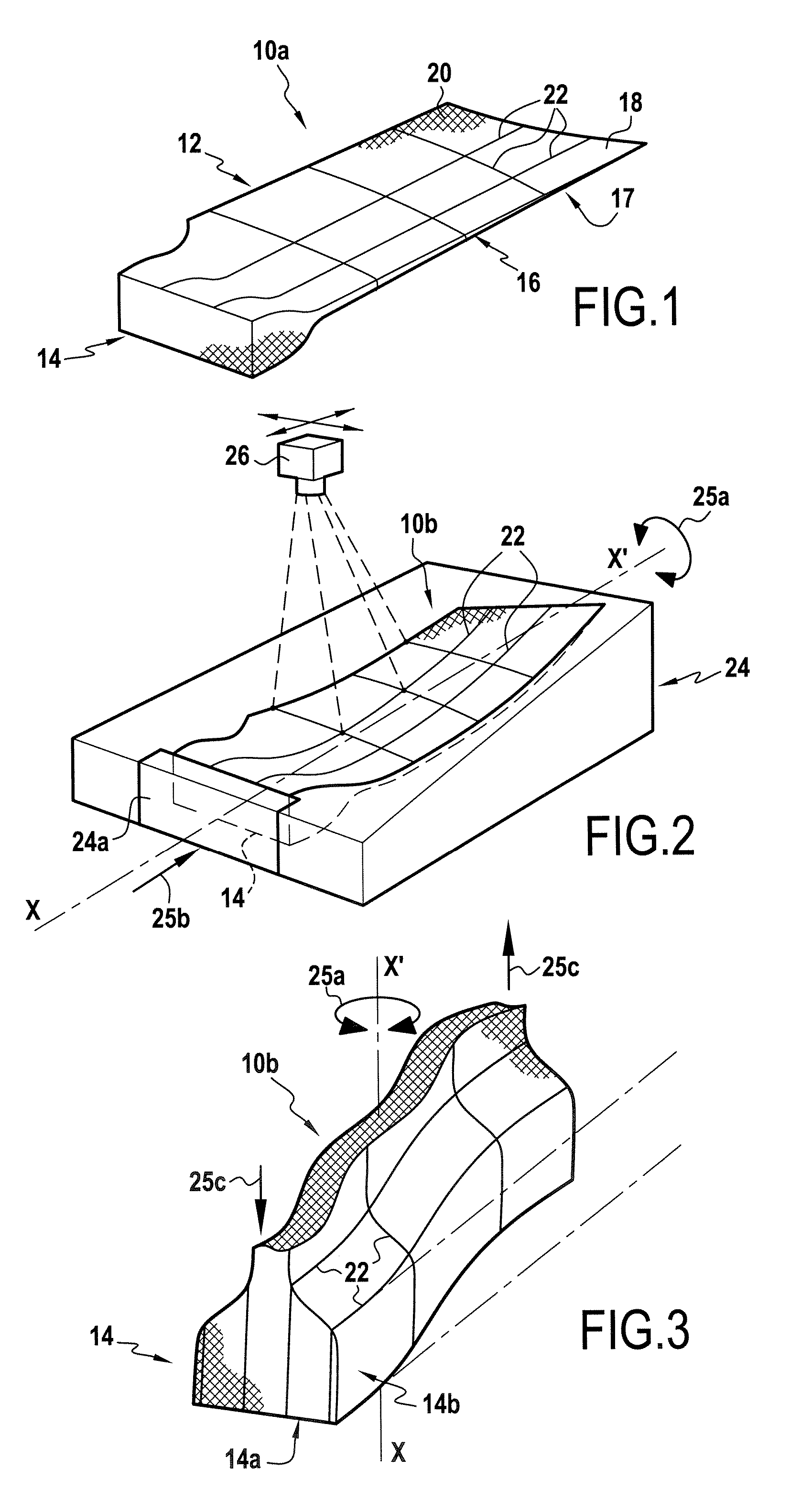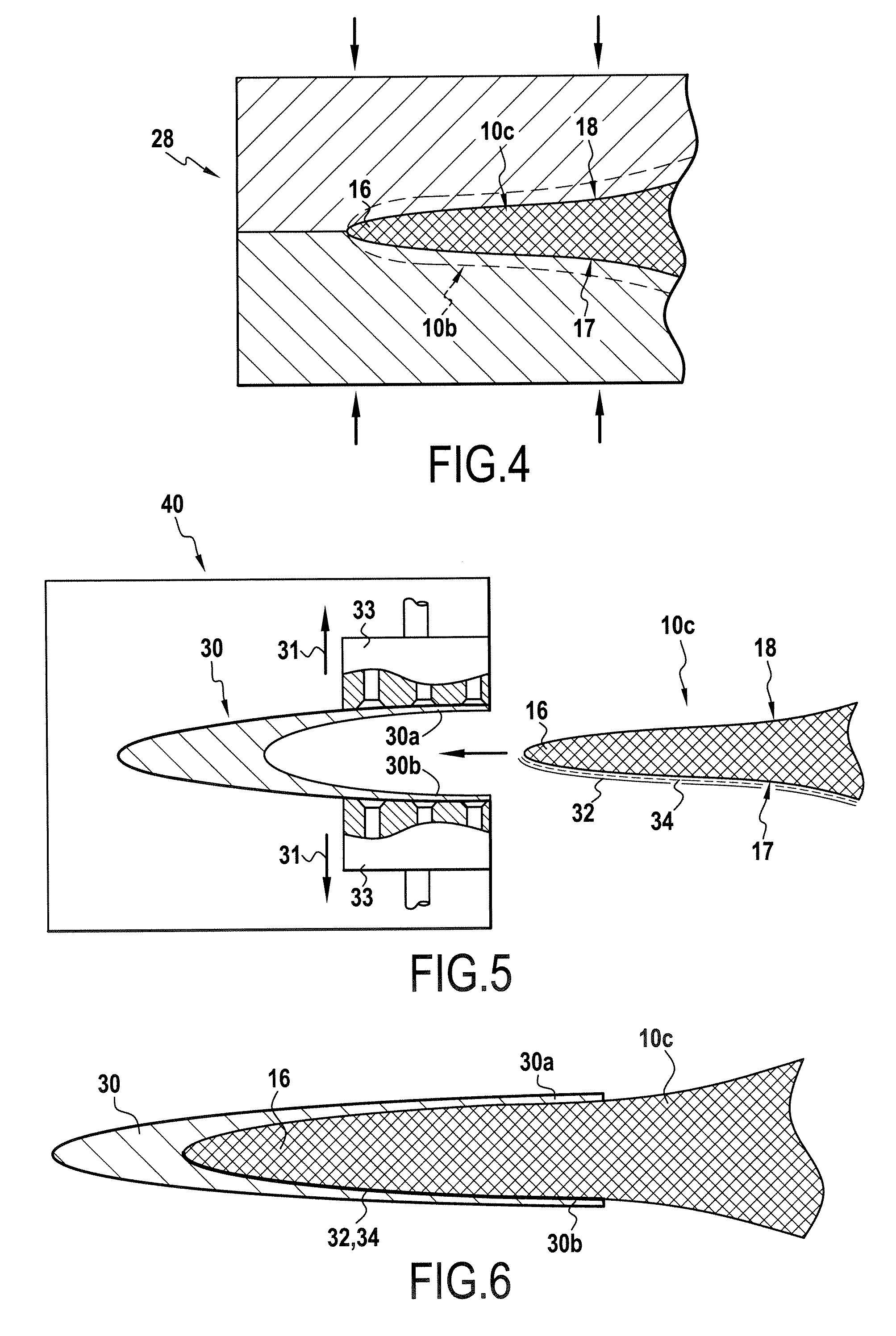Method of manufacturing a composite turbomachine blade, and a blade obtained by the method
a turbomachine and composite technology, applied in the direction of wind motor components, non-positive displacement fluid engines, liquid fuel engine components, etc., can solve the problems of high cost, high cost, and damage to mechanical strength, and achieve the effect of improving cohesion and facilitating weaving
- Summary
- Abstract
- Description
- Claims
- Application Information
AI Technical Summary
Benefits of technology
Problems solved by technology
Method used
Image
Examples
Embodiment Construction
[0030]The method in accordance with the present invention is implemented starting with a preform of the kind that results from three-dimensional weaving, e.g. implemented in accordance with French patent document FR 2 861 143. Thus, the first step a) of the method consists in making such a three-dimensional preform by weaving, the preform comprising warp yarns and weft yarns. Amongst these two groups of yarns, tracer yarns are provided that can be identified visually amongst the others and that are situated regularly, at least at the surface of the preform.
[0031]Advantageously, said preform is made up of warp yarns and of weft yarns, with the direction of the warp yarns forming the longitudinal direction of the preform, said preform having at least a first portion made using a first weave for forming the airfoil of a blade, and a second portion, made using a second weave, for forming the root of the blade, with the first and second portions being united by a transition zone in which...
PUM
| Property | Measurement | Unit |
|---|---|---|
| temperature | aaaaa | aaaaa |
| temperatures | aaaaa | aaaaa |
| temperatures | aaaaa | aaaaa |
Abstract
Description
Claims
Application Information
 Login to View More
Login to View More - R&D
- Intellectual Property
- Life Sciences
- Materials
- Tech Scout
- Unparalleled Data Quality
- Higher Quality Content
- 60% Fewer Hallucinations
Browse by: Latest US Patents, China's latest patents, Technical Efficacy Thesaurus, Application Domain, Technology Topic, Popular Technical Reports.
© 2025 PatSnap. All rights reserved.Legal|Privacy policy|Modern Slavery Act Transparency Statement|Sitemap|About US| Contact US: help@patsnap.com



